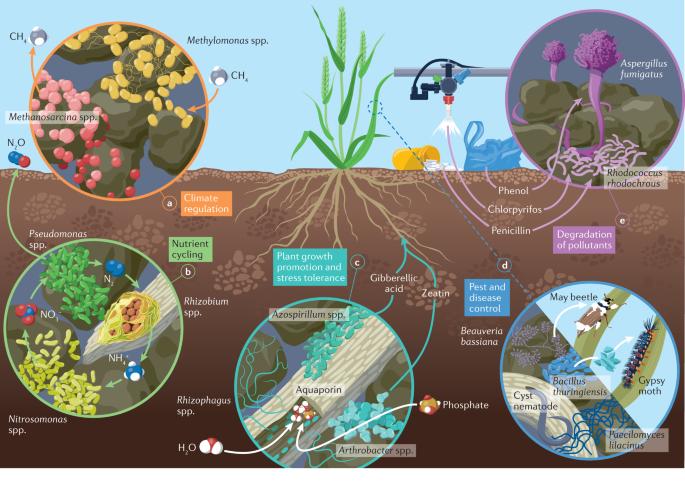Soil structure and microbiome functions in agroecosystems
引用次数: 47
Abstract
Soil microbiomes drive key functions in agroecosystems, determining soil fertility, crop productivity and stress tolerance. The microbiome is intricately linked with soil structure, such as aggregation and pore connectivity, because this structure regulates the flow of water, oxygen and nutrients through the system. In this Review, we summarize the key functions of soil microbiomes in agroecosystems, highlight the dependence of these functions on the structural integrity of the soil, and discuss how agricultural practices influence the link between soil structure and microbiome functioning. System-level agricultural management practices can induce structural alterations to the soil, thereby changing the microbial processes occurring at the microscale. These changes have large-scale consequences, such as soil erosion, reduced soil fertility and increased greenhouse gas emissions. Sustainable approaches such as integrated soil fertility management and integrated pest management seek to improve soil structure and enhance microbial biodiversity, but we lack a mechanistic understanding of how multifaceted decisions at the farm level shape these context-dependent small-scale processes in the long term. Future research needs to bridge the microscale and field scale to inform agricultural management decisions for building climate-smart, resource-efficient and stress-resilient agroecosystems, and to harness the soil microbiome as a nature-based solution for sustainable agriculture. Soil structure, the soil microbiome and ecosystem functioning are intimately linked. This Review describes these connections in agroecosystems and the impact of management strategies on them.

农业生态系统中的土壤结构和微生物群功能
土壤微生物群驱动着农业生态系统的关键功能,决定着土壤肥力、作物产量和抗逆性。微生物群与土壤结构(如聚集和孔隙连通性)有着错综复杂的联系,因为这种结构调节着水流、氧气和养分在系统中的流动。在本综述中,我们总结了农业生态系统中土壤微生物组的主要功能,强调了这些功能对土壤结构完整性的依赖性,并讨论了农业实践如何影响土壤结构与微生物组功能之间的联系。系统级的农业管理措施会引起土壤结构的改变,从而改变微观尺度上的微生物过程。这些变化会产生大规模的后果,如土壤侵蚀、土壤肥力下降和温室气体排放增加。土壤肥力综合管理和病虫害综合防治等可持续方法旨在改善土壤结构和提高微生物的生物多样性,但我们对农场层面的多方面决策如何长期影响这些取决于具体情况的小规模过程缺乏机制上的了解。未来的研究需要在微观尺度和田间尺度之间架起桥梁,为农业管理决策提供信息,以建立气候智能型、资源节约型和抗压型农业生态系统,并利用土壤微生物组作为可持续农业的自然解决方案。土壤结构、土壤微生物组和生态系统功能密切相关。本综述介绍了农业生态系统中的这些联系以及管理策略对它们的影响。
本文章由计算机程序翻译,如有差异,请以英文原文为准。
求助全文
约1分钟内获得全文
求助全文

 求助内容:
求助内容: 应助结果提醒方式:
应助结果提醒方式:


